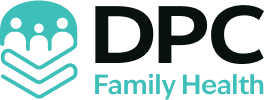TL;DR:
- Direct Primary Care (DPC): A healthcare model establishing a direct financial relationship between doctors and patients, with set fees covering most services.
- Fee Structure: Typically ranges from $50 to $150 monthly, eliminating copays and deductibles.
- Key Features: Longer appointments (30-60 mins), reduced administrative tasks, and enhanced doctor access via text, email, or phone.
- Benefits: Personalized care, transparent pricing, improved patient-physician relationships, and better health outcomes.
- Limitations: DPC may not cover specialized treatments or hospital visits; supplementary insurance is recommended for complex needs.
- Resources to Find DPC Providers: Websites like DPC Frontier and the Direct Primary Care Coalition.
Ever feel like your healthcare is just one big, confusing mess? What if there was a way to make it all more straightforward, personal, and affordable? Enter Direct Primary Care (DPC)—a game-changer in healthcare. Imagine having unlimited access to your doctor for a flat fee, no insurance hoops to jump through, and longer appointments that get to the heart of your health issues. This post dives into what makes DPC the ultimate healthcare hack and why it’s gaining so much traction.
What Is Direct Primary Care: Simplified Healthcare Solution
Direct Primary Care (DPC) is a healthcare model that bypasses insurance by establishing a direct financial relationship between doctors and patients. Patients pay a set fee—monthly, quarterly, or annually—for various primary care services. This model, which has been in place since the mid-2000s, is gaining popularity due to its simplicity and cost-effectiveness. It streamlines the healthcare process, making it more personal and straightforward.
How Does DPC Differ from Traditional Healthcare Models?
Unlike the traditional fee-for-service model that relies on insurance, DPC removes copays, deductibles, and insurance claims. This shift focuses more on quality care rather than navigating insurance paperwork. It encourages a stronger doctor-patient relationship with longer appointment times and better communication.
Key Features of DPC:
- Flat Fee Structure: Patients pay a predictable, regular fee.
- No Insurance Hassles: No claims, copays, or deductibles.
- Enhanced Access: Direct communication with your doctor via text, email, or phone.
- Longer Appointments: More time for thorough consultations.
- Personalized Care: Focused attention on individual health needs.
General Benefits of DPC
Patients benefit from transparent pricing and comprehensive care without the administrative burdens typically associated with insurance. This leads to higher satisfaction, better health outcomes, and a more personalized experience. For doctors, reduced overhead costs and fewer bureaucratic hurdles mean they can focus more on patient care, making their practice more fulfilling.
How Does Direct Primary Care Work?
Direct Primary Care (DPC) operates on a straightforward financial agreement between doctors and patients. Patients pay a flat monthly, quarterly, or annual fee covering most primary care services. This eliminates insurance claims, copays, and deductibles, similar to a gym membership, but for healthcare. This setup makes costs predictable and transparent, freeing patients from insurance paperwork.

Flexible Communication
In DPC, communication is highly flexible. You can reach your doctor via text, email, or phone—whichever suits you best. This offers a new level of accessibility. Have a quick medical question but don’t want to book an appointment? With DPC, you can text or email your doctor for a prompt response. It’s like having a doctor in your pocket!
Comparing Traditional Healthcare and DPC
| Service | Traditional Model | DPC Model |
|---|---|---|
| Appointment Length | 10-15 minutes | 30-60 minutes |
| Communication | Office visits only | Text, email, phone |
| Administrative Tasks | High | Low |
| Cost Transparency | Variable | Fixed fee |
| Insurance Claims | Required | Not needed |
| Access to Doctor | Limited | Enhanced |
Reducing administrative burdens is a significant win for both doctors and patients. Doctors can focus more on patient care without the need to file insurance claims or deal with endless paperwork. This means fewer distractions and more time for what matters—your health. Less administrative hassle also translates to lower overhead costs, making the system more efficient and affordable.
Benefits of Direct Primary Care
Direct Primary Care (DPC) excels in affordability and transparency. Imagine knowing precisely what you’ll pay for healthcare without surprise bills. Patients pay a flat monthly, quarterly, or annual fee covering most primary services. There are no more copays, deductibles, or waiting for insurance claims. This setup makes budgeting for healthcare straightforward and predictable.
Benefits for Patients
- Personalized Attention: Doctors have fewer patients, allowing for more tailored care.
- Longer Appointment Times: More time to discuss your health concerns.
- Direct Access: Communicate with your doctor via text, email, or phone.
- No Insurance Hassles: Skip the paperwork and delays.
- Transparent Pricing: Know your costs upfront, with no hidden fees.
Benefits for Physicians
- Reduced Overhead Costs: Less administrative work means lower expenses.
- More Time with Patients: Focus on quality care rather than quantity.
- Improved Job Satisfaction: Less burnout from dealing with insurance.
- Simplified Billing: Direct payments eliminate complex coding and claims.
- Better Patient Relationships: More time to build trust and rapport.
These benefits lead to higher patient satisfaction and better health outcomes. Everyone wins when doctors can focus more on patient care and less on paperwork. Patients feel more valued and receive more comprehensive care, while doctors enjoy a more fulfilling practice. This holistic approach creates a win-win situation, making DPC a standout in the healthcare landscape.
Cost Structures in Direct Primary Care
Direct Primary Care (DPC) costs are refreshingly straightforward. Most DPC practices charge a flat retainer fee, which can be paid monthly, quarterly, or annually. Typically, this ranges from $50 to $150 per month. This fee covers most of your primary care needs, making budgeting for healthcare easier. Unlike traditional insurance, there are no copays or deductibles—just one predictable payment.

What Does the Retainer Fee Cover?
The retainer fee covers most primary care services, including routine check-ups, preventive care, and basic lab work. Think of it as an all-you-can-eat buffet for your healthcare. This includes unlimited visits, longer appointment times, and direct communication with your doctor via text, email, or phone. Some practices offer extra perks, like basic procedures and discounted medication rates.
Potential Additional Costs
Your retainer fee might not cover some additional costs. These could include:
- Specialized Tests: Advanced imaging or specialized blood tests.
- Hospital Visits: Care provided in a hospital setting.
- Specialist Consultations: Visits to specialists outside the primary care practice.
- Medications: Prescription drugs beyond basic medications.
- Procedures: Certain medical procedures that are complex or require specialized equipment.
While DPC covers a lot, it’s wise to have supplementary insurance for specialized treatments. This might include surgeries, emergency room visits, or chronic condition management beyond primary care. Think of your DPC membership as your healthcare foundation, with supplementary insurance filling in the gaps for more complex needs. This way, you’re fully covered without breaking the bank.
Direct Primary Care vs. Traditional Healthcare Models
The traditional healthcare model in the U.S. relies heavily on health insurance. Patients typically pay premiums, copays, and deductibles, navigating complex claims processes. This often results in short appointment times, rushed visits, and much time spent on administrative tasks. Doctors are burdened with high patient loads and endless paperwork, which can detract from the quality of care.
Direct Primary Care (DPC) changes this by cutting out insurance intermediaries. Patients pay a flat fee—monthly, quarterly, or annually—directly to their physician. This covers most primary care services, eliminating the need for copays, deductibles, and insurance claims. The result? More personalized attention, longer appointments, and a stronger doctor-patient relationship. DPC doctors have fewer patients, allowing them to focus more on each individual’s health needs.
Key Comparison Points
| Aspect | Traditional Model | DPC Model |
|---|---|---|
| Appointment Length | 10-15 minutes | 30-60 minutes |
| Communication | Office visits only | Text, email, phone |
| Administrative Tasks | High | Low |
| Cost Transparency | Variable | Fixed fee |
| Insurance Claims | Required | Not needed |
| Access to Doctor | Limited | Enhanced |
Critics argue that DPC may not cover all healthcare needs, especially those with complex conditions requiring specialized care. While DPC excels in primary care, it doesn’t include hospital visits or specialist consultations, necessitating additional insurance. However, proponents counter that DPC encourages better preventive care and chronic disease management, potentially reducing the need for specialized treatments. The cost savings and quality of care can outweigh the disadvantages for many patients.
Real Patient Stories and Testimonials

Patient stories are essential for understanding the real benefits of Direct Primary Care (DPC). These testimonials illustrate how DPC can transform healthcare experiences. Let’s look at a couple of real stories that showcase the magic of DPC.
Emily’s Story: As a single mom juggling work and kids, Emily was stressed about scheduling doctor’s appointments and dealing with insurance paperwork. After switching to DPC, she found healthcare much more convenient and personal. With direct access to her doctor via text and email, she could quickly get medical advice without dragging her kids to the office. This ease of communication and personalized care was a game-changer for her busy life.
Mr. Johnson’s Story: A retired veteran, Mr. Johnson was battling chronic conditions requiring constant monitoring. Traditional healthcare models left him feeling rushed and unheard. Switching to DPC changed everything. His DPC doctor listened more to his concerns and created a comprehensive care plan tailored to his needs. With extended visits and better access to his physician, Mr. Johnson felt more in control of his health and saw significant improvements.
Key Themes from Testimonials:
- Personalized Care: Patients receive care tailored to their unique needs.
- Better Access: Direct communication with doctors improves accessibility.
- Overall Satisfaction: Patients feel more satisfied and valued in the DPC model.
These stories highlight the transformative power of DPC, making healthcare more personal, accessible, and satisfying.
Finding Direct Primary Care Providers Near You
Finding a Direct Primary Care (DPC) provider near you can be simple with the right resources. Start with online directories and DPC-specific websites. Sites like DPC Frontier and the Direct Primary Care Coalition offer extensive provider directories. These resources allow you to filter by location, making finding a DPC practice in your area easy. You can also check local healthcare listings that might feature DPC options.
Websites and Resources:
- DPC Frontier: Comprehensive directory of DPC providers.
- Direct Primary Care Coalition: Lists providers and offers additional DPC information.
- Local Healthcare Listings: Check local directories for nearby providers.
- Health Sharing Ministries: Some offer links to DPC practices.
Another effective method is to ask for recommendations from friends or family who already use a DPC provider. Word-of-mouth can be incredibly helpful in finding a reputable practice. Also, read online reviews to gauge patient satisfaction and quality of care. You can find a DPC provider that fits your needs using these methods.
Final Words
Direct Primary Care (DPC) breaks free from old healthcare hassles with a simple yet effective model. It cuts out insurance middlemen, offering personalized care through flat fees.
With DPC, you get more face time with your doctor, transparent pricing, and a focus on preventive care. It’s a win-win for both patients and physicians.
By understanding direct primary care, you can make informed choices for better health outcomes. So why not give it a shot?
FAQ
Direct primary care pros and cons
Direct Primary Care has pros, like personalized care and longer appointments, but it also has cons, like not covering all healthcare needs, especially complex conditions.
Direct primary care near me
You can find DPC providers using online directories like DPC Frontier and Direct Primary Care Coalition or checking local listings and reviews.
Is direct primary care worth it?
DPC can be worth it if you value personalized care, longer appointments, and improved access to your doctor.
Direct primary care insurance
DPC typically bypasses traditional insurance, requiring patients to pay a flat fee directly to the provider for services.
Direct primary care criticism
Critics worry that DPC might not cover all healthcare needs, especially for complex conditions, and may not be suitable for everyone.
Direct primary care model
The DPC model involves paying a flat fee directly to your provider, bypassing traditional insurance, and offering more personalized and accessible care.
Direct Primary care monthly cost
Monthly fees for DPC usually range from $50 to $150, covering primary care services without copays or deductibles.
Direct primary care salary
DPC doctors can often earn a comfortable salary with fewer patients, allowing for more personalized care and less administrative burden.

